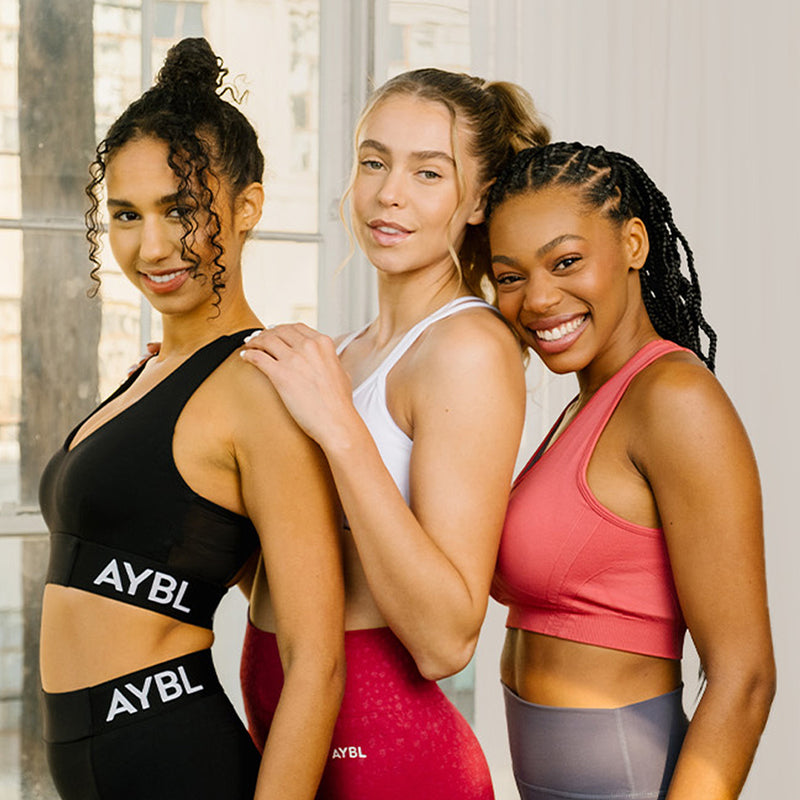
Your Complete Guide To Re-AYBL: What Is It & How To Use It
At AYBL, we’re taking the steps to support circularity. We understand our community cares about the planet - and we do too.
That’s why, for our US-based customers, we’ve partnered with Treet to create Re-AYBL, an official platform to give your preloved items a new lease of life.
This is only the first step of many, but right now it’s about progress, not perfection - and transparency with our community is key.
Our official launch will take place in line with Earth Day on 22nd April - impeccable timing, if we do say so ourselves - but if you want to be one of the first to try our new platform, you can start selling and buying from now!
Discover everything you need to know about our partnership with Treet, including how you can earn store credit or cash in return for selling your preloved items with Re-AYBL. If that’s not enough to persuade you, we really don’t know what is…

WHY WE CREATED Re-AYBL
Our commitment to helping restore a healthier planet is an ever-evolving journey.
One way we’re working to reduce our environmental impact is to help eliminate, reduce or recycle waste, where possible. We believe just because you’re ready for a wardrobe update, doesn’t mean it should be game over for your activewear. Through Re-AYBL, you can sell your preloved AYBL items, extending their life-cycle, reducing landfill waste and helping to lower the environmental impact of activewear.
According to a ThredUp’s 2021 annual report, extending the life-cycle of clothes diverts textiles from landfills and displaces greenhouse gas emissions used in garment production. Buying an item secondhand replaces the need to manufacture new products, reducing its carbon footprint by 82%. That’s a huge deal!
HOW DOES IT WORK?
Using Re-AYBL to sell your AYBL gear couldn’t be easier…
- Head to Re-AYBL and set up your account. This should only take a couple of minutes.
- List your item by taking a few pictures of the product - using your phone camera is perfectly fine! - and follow the prompts to provide some more detail about what you’re selling. Once you’re finished, this will be submitted for review.
- Once your item has been sold, you’ll be sent a prepaid shipping label to ship out your preloved item to its new owner.
- Once your item has been received and verified by the buyer, you can either claim the selling price in cash or 110% in store credit to put towards your new workout ‘fit from beaybl.com.

MISSED OUR RETURNS PERIOD?
Treet is the perfect remedy if you’ve missed our 30-day returns period or if your items don’t quite match our returns criteria (all returns must be in their original selling condition with all tags attached).
Not only does it mean you can make back some of your money - or a bit extra if you choose store credit - you’ll also get the satisfaction of choosing better for the planet.
For more information regarding our returns, please see here.  When you buy with Re-AYBL or trade in your gently-worn gear, you’re helping to keep activewear, well, active for longer and helping to restore a healthier planet. On top of that, you’ll receive credit to use on the freshest AYBL drops. That’s a win win in our books!
When you buy with Re-AYBL or trade in your gently-worn gear, you’re helping to keep activewear, well, active for longer and helping to restore a healthier planet. On top of that, you’ll receive credit to use on the freshest AYBL drops. That’s a win win in our books!
Join the Re-AYBL community, and together, we can do more for our planet.
Please note, Re-AYBL is currently only available to our US customers.